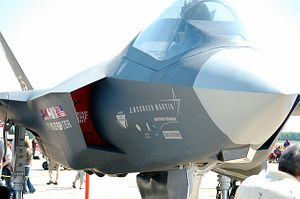The Center for New American Security Future Foundry report (discussed here in my last column) provides an interesting set of ideas for how to think about the future of the U.S. defense industry, but also leaves some important questions open.
Comparative context would be helpful. “Capability monocultures and an ever-dwindling variety of weapons systems, procured at higher prices and in lower quantities than ever before” isn’t “failure to adapt to global trends”; it is a global trend, not apparently dependent on the specifics of the U.S. defense industry or on U.S. defense procurement strategy. The United States, China, Russia, and the European Union are all spending more to field fewer front line systems, supporting fewer front-line soldiers and sailors.
To be sure, there are aspects of China’s approach that look like “optionality.” China is currently pursuing the development or production of at least four distinct front-line fighters (plus a low-end export model, the JF-17), not to mention a wide array of different missile systems. But China will field all of these systems in smaller numbers than their counterparts a generation ago.
And more by accident than design, the European Union has adopted something that looks like “optionality.” For example, the Rafale, Gripen, Eurofighter Typhoon, and F-35 all occupy different niches of the European defense industrial complex, competing against one another for foreign sales, but also complementing each other in important ways. Extended to ground vehicles, UAVs, shipbuilding, and other sectors, a certain kind of pan-European “optionality” reigns. Of course, it exists because a variety of state-supported defense firms can rely on their home governments to float alternative projects, a situation that does not apply in the United States.
With regards to relevance for the United States’ East Asian partners, the report includes some discussion of the international aspects of an “optionality” strategy. Both DoD and the defense industry think a great deal about arms exports; the former because of concerns over interoperability, the latter because of interest in the viability of particular projects. Indeed, arms exports facilitate a certain kind of “optionality” by keeping defense production lines alive even after DoD has lost interest. The report calls for reforming export control systems, Foreign Military Sales systems, and for taking a strategic approach to supporting allied defense industries, which might be a boon for developed military-industrial complexes, like that of South Korea.
Unfortunately, the report does not have much more to contribute on the question of military technological diffusion. Like much literature on the Third Offset, it assumes that the genie is out of the bottle regarding efforts to manage and protect advanced military technology. The authors caution against too much relaxation of export controls and technology transfer, but don’t offer any particularly original ideas on this point.
The report also hand waves away some of the difficulties of working with Congress, which remains under-informed about defense issues and under-motivated to properly vet Defense Department procedures. If Congress could easily “address dysfunction,” a great many of our problems would already be solved. It is also exceedingly optimistic about the ability of the secretary of defense and Congress to facilitate meaningful competition between the services on procurement priorities. On the upside, unified government should mean the end of sequestration and some potential for the development of long-term defense budget prioritization.
The report also elides some of the difficulties of managing service cultures. To take just the Air Force, it is well-established that the USAF’s preference for high-end systems depends as much on longstanding elements of organizational culture (some extending back to the inception of the organization) as it does to any specific set of procurement policies. Similar arguments could be made about the USN’s approach to carrier aviation, or to submarine acquisition. Indeed, one of the reasons why the services are often hostile to certain kinds of “optionality” is concern that Congress or DoD may force lower-end capabilities onto them.
These quibbles notwithstanding, the report provides a fine jumping-off point for thinking about what the future of the defense industry should look like. And “optionality” may someday become one of the buzzwords that we simultaneously bemoan and find useful.
































